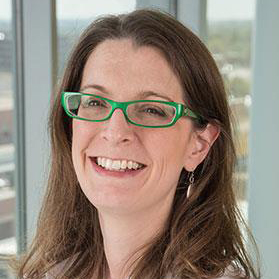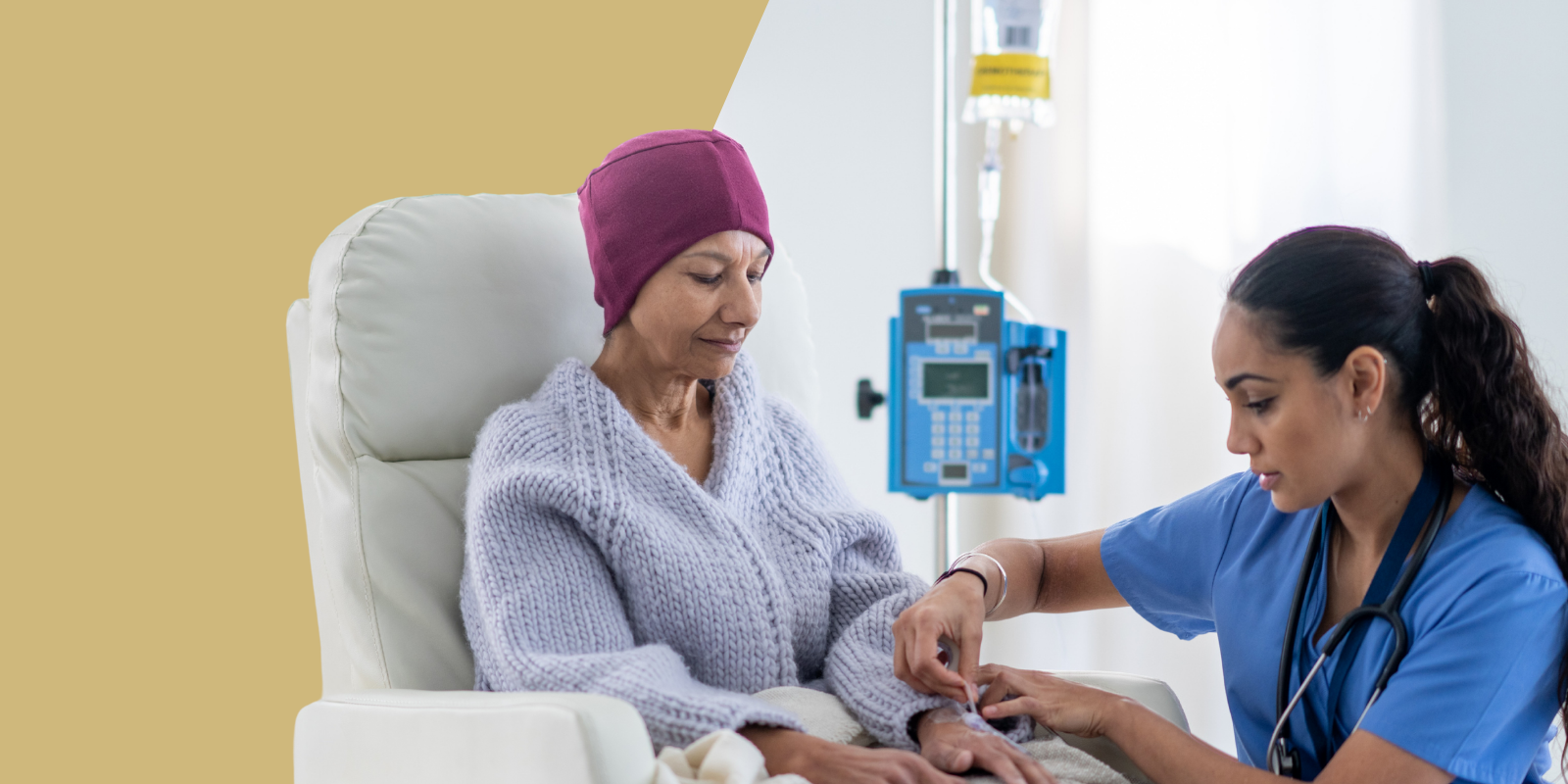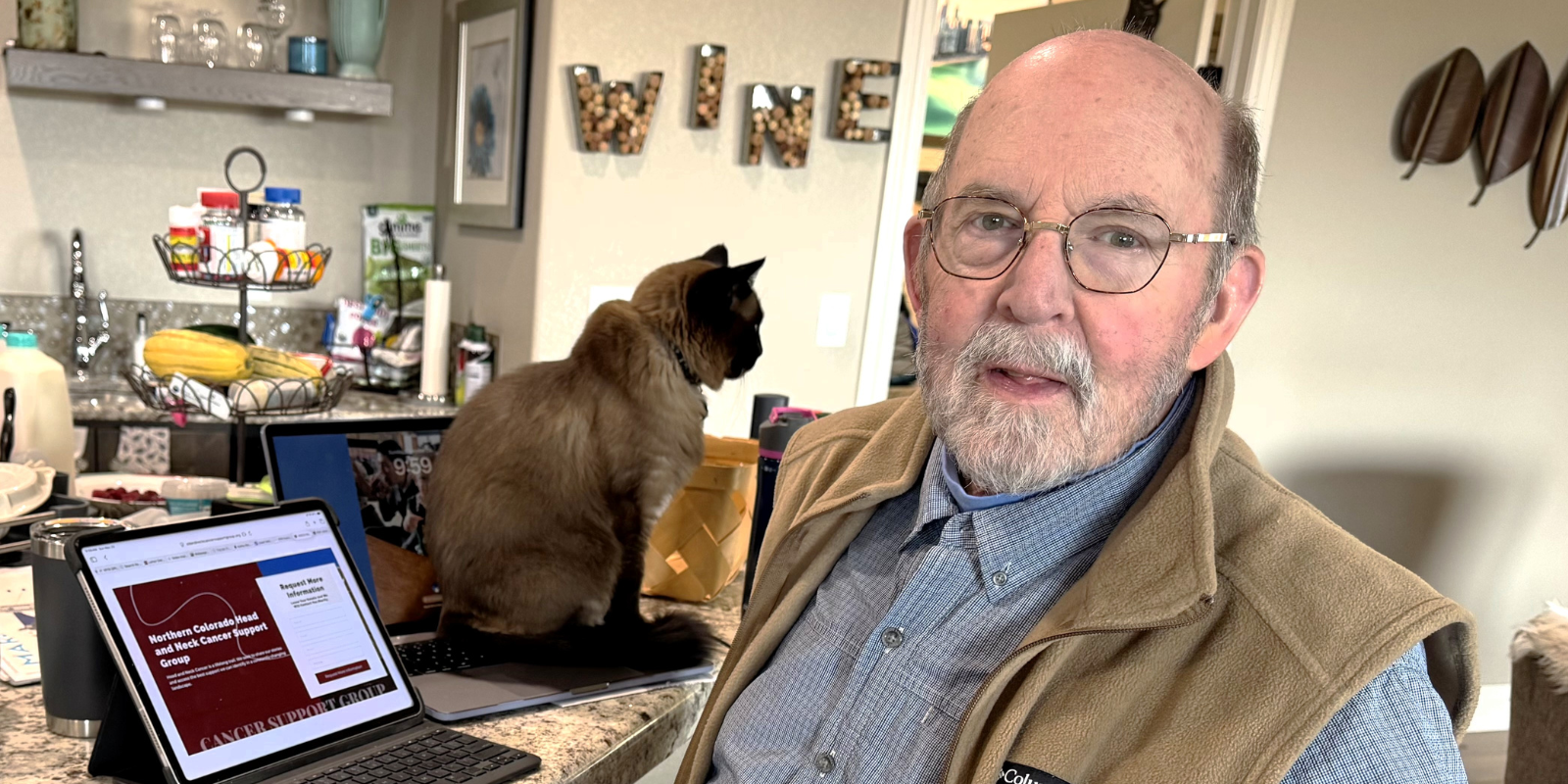There’s no such thing as perfect timing when it comes to lung cancer, but Kathy Ballard got pretty close.
Ballard was diagnosed with stage III lung cancer in early 2022, soon after the U.S. Food and Drug Administration approved a new course of treatment for patients in her situation. A “neoadjuvant” or presurgical course of immunotherapy and chemotherapy, combined, had recently been found in clinical trials to give patients with lung cancer a better chance of survival.
“There is preclinical data that suggests this approach works better because, prior to surgery, the tumor cells still have antigens to attack,” says University of Colorado Cancer Center member Erin Schenk, MD, PhD, Ballard’s medical oncologist. “That means that when the immunotherapy is given, there's more stimulus for the T cells to go in and attack the cancer. Based on the clinical trial, there was evidence that doing this before surgery could help patients in terms of shrinking their tumors and getting a sense of how responsive their disease is to the therapies we have.”
Ballard bore out the promise of the clinical trials perfectly — after a course of chemotherapy and immunotherapy, the tumors in her lung and a nearby lymph node shrunk considerably even before surgery.
“I could tell the treatment was working because her breathing got significantly better,” Schenk says. “She needed supplemental oxygen before starting treatment, but after her first cycle of therapy, she didn’t need the supplemental oxygen nearly as much. She noticed the change in terms of her symptoms, and that's a great clinical sign.”
It started with a cough
For Ballard, now 77, the ordeal began with a persistent cough that kept coming back. She went to urgent care and even the ER for X-rays, but it wasn’t until the third X-ray that her primary care physician saw cause for concern. A follow-up CAT scan at UCHealth, the clinical partner of the CU Cancer Center, revealed a tumor in her lung that had spread to a nearby lymph node.
“Kathy came to us through our multidisciplinary clinic, which is a clinic we have as a lung cancer tumor group, where surgeons, radiation oncologists, medical oncologists, radiologists, pathologists, pulmonologists — everyone who touches a patient who has a new diagnosis of lung cancer and potentially treats them in some way — are all part of this group,” Schenk says. “Part of what happens at these meetings is that we look at a patient's images, hear their history, and talk among ourselves about how can we best help the patients that we're seeing that day.”
In Ballard’s case, that meant the presurgical combination of chemotherapy and immunotherapy that, by the time her surgery rolled around in August 2022, made the procedure less complicated than her surgeon originally predicted.
“At one point in the beginning, the surgeon said the cancer was in the lower lobe of my right lung, but he might need to remove the rest,” Ballard says. “As it turned out, because of the chemotherapy, they only needed to take the bottom lobe and the middle lobe of my lung. The top was clear. That made a big difference.”
“Coming back to myself”
During the procedure, Ballard’s surgeon, CU Cancer Center member John Mitchell, MD, discovered an additional cancerous lymph node, so after the surgery she underwent more chemotherapy to treat that lymph node and to wipe out any remaining traces of the cancer. Recovering from that, as well as the surgery, was a long road, but it was worth it to be cancer-free, says Ballard, who still comes to the CU Cancer Center regularly for follow-up CT scans to make sure the cancer hasn’t spread.
“I am starting to feel like I'm coming back to myself,” she says. “The last time I saw Dr. Schenk, I came out, for the first time, feeling like I had a clear future. And I'm optimistic. It's taken me that long afterward even to absorb it. I didn't want to believe I was cured if it wasn't going to happen.”
Through it all, she says, the support of her husband and children gave her the strength she needed to carry on.
“The depth of the support they gave me made me much more aware and appreciative of the love that I have in my world,” she says. “I hope I don’t ever take any of this for granted. I hope I can always remember how we got through this together.”
Importance of an academic cancer center
Ballard had many options for her cancer treatment, but the fact that she came to the CU Cancer Center made a huge difference in her care, Schenk says.
“We're an academic center that's really involved in lung cancer therapy developments. We were all very aware of this information coming through, and the instant it was approved, truly, as a group, we shifted our practice overnight,” she says. “We had this new set of data that told us we're probably going to do better by our patients if we give treatment upfront before surgery. Kathy benefited because she met with a group that knew their stuff and was ready to change the instant the data told us there was a better way to go about treatment.”
If there’s one message Schenk wants to get out to people with lung cancer, as well as their families, it’s that there is hope when it comes to the disease. Ballard’s case is a great illustration of the ways in which treatments are changing and improving all the time.
“We have a number of ways to help patients and treat patients. We're working hard to try to increase cure rates, but even in situations where the cancer has spread beyond the lungs, we're able to help keep patients alive for longer and help them have a good quality of life,” she says. “Kathy's story is one of hope. It doesn't matter how old you are; it doesn't matter that you have a lung cancer diagnosis. It's worth it to come and see us.”
Main photo: Kathy Ballard and her husband, Jim. Courtesy of Kathy Ballard




